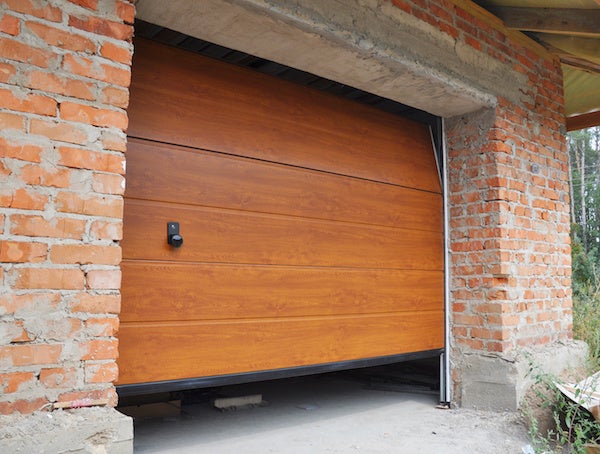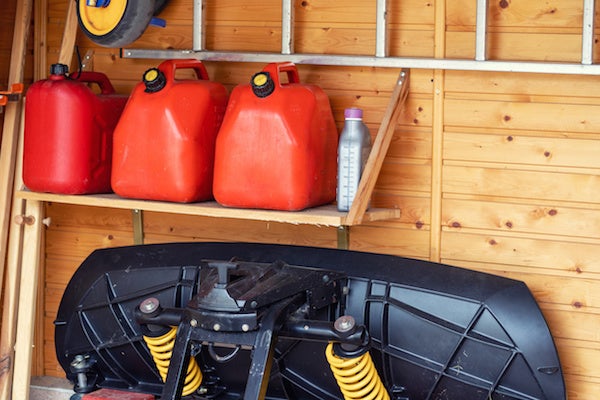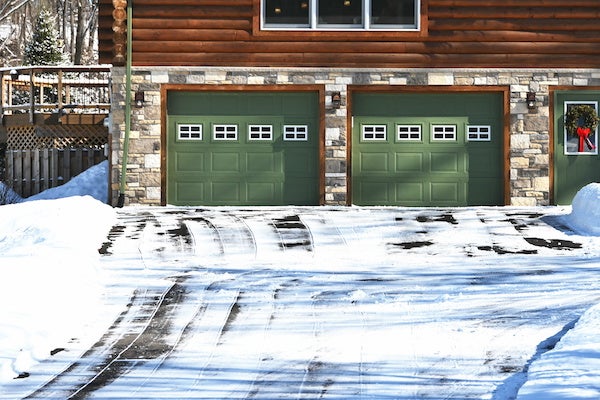-
4 Steps for When Your Garage Door Gets Stuck

When a garage door gets stuck, it creates a major annoyance as well as a safety hazard. Homeowners ought to be able to open and close the door whenever they please. On occasion, however, the garage door simply won’t cooperate. Here are some steps you can take when your garage door gets stuck.
Confirm Power
A lack of power is typically the easiest issue to fix, so start there. Ensure the garage door opener is plugged into an outlet. If it is, test the outlet by plugging in another device (such as a nightlight) and seeing whether or not the new device is receiving power. If the car remote or keypad will not open the door but the interior button will, try a new set of batteries in either the remote or keypad as needed.
Check the Lock
The locking feature may have been inadvertently activated. Check the interior panel to make sure it is not “locked.” In lock mode, the door will not respond to remotes. The interior button will usually be lit to some degree. A steady light indicates that the door is unlocked while a flashing light usually means the door is locked. To lock or unlock a door, press and hold the “lock” button until the light pattern changes.
Lubricate Moving Metal Parts
Most hardware stores sell lubricants designed specifically for garage door openers. Use this type or another silicone-based lubricant. Spray a small amount of lubricant on top of the rails, at metal hinges, and along metal springs. During this step, also ensure bolts and other fasteners are secure. Lubrication is an important step in door maintenance and should be performed at least once every six months.
Test the Alignment
When a garage door becomes misaligned,it often struggles to open or close. If the door is stuck, try using the manual release to slide the door open or closed by hand. When properly lubricated, the door should glide easily and smoothly. If not, the door is likely misaligned, which will require professional attention.
Some home maintenance concerns can be handled without professional help. In the event of a garage door getting stuck, several steps can be taken at home before reaching out to a professional repair team. Follow these steps to diagnose and remedy the stuck garage door.
If your garage door is causing your problems, schedule a service call with Thomas V. Giel Garage Doors, Inc. experts. For more helpful information about maintaining your garage door, browse the Thomas V. Giel Garage Doors, Inc. blog.
-
How to Prevent Garage Fires

Owners and renters invest a great amount of time and money to prevent or minimize fire damage. Local building codes set a number of standards to reduce fire hazards. Fires can spread quite rapidly from one area to another, including the garage. Within the home, we take several precautions, and we should do so in the garage as well. Here are some tips on how to prevent garage fires.
Take Care of Your Chargers
Many individuals store power tools or other electronics in the garage. If a charger or other device is plugged into a garage outlet, take care to reduce the associated risk of fire. Since electronics emit warmth, allow plenty of space between devices. This will prevent too much heat from building up. Ensure that each device has adequate airflow to its ventilation fan. Proper ventilation will also reduce the risk of fire.
Store Flammables Responsibly
A garage can be home to a number of highly-flammable materials, including gasoline, kerosene, turpentine, and more. Store such items in a fireproof metal cabinet. Make sure that the cabinet door closes securely. By securing the flammables apart from other garage items, you will significantly reduce the amount of fuel for any potential fires. In the event of a fire, the closed metal door can minimize the temperature within the cabinet.
Eliminate Clutter
Garages are commonly intended for storing outdoor items such as garden tools, snow blowers, and bicycles. Over time, many unplanned items take up residence in the garage. Experts recommend that occupants maintain the garage at a “home-like” level of clutter. Each item is flammable to some degree, so clutter removal is one of the most effective ways to reduce the risk of fire.
Each year, Americans spend billions of dollars on home fire insurance and fire prevention methods. A number of house fires begin in the garage. The garage is usually attached to or close to the home, so it is important to prevent fires in the garage as well as the home. By limiting the potential fire hazards as listed above, an owner or renter can help prevent garage fires. For more helpful information about keeping your home safe and secure, browse the Thomas V. Giel Garage Doors, Inc. blog.
-
Common Winter Door Problems and How to Fix Them

For people living in colder climates, winter can be harsh and destructive. Icy winters can produce a number of troubles. Car batteries are strained, walkways become slippery, and garage doors can start having problems. Many of these issues can be resolved without enlisting a professional. Check out these common winter door problems and how to fix them.
Ineffective Lubricant
In warm temperatures, lubricants are more runny and can move around easily. During the winter, lubricants become more dense, and heavy grease may not move easily enough to properly lubricate the garage door opener. Lubrication reduces the amount of work a motor must perform in order to open the garage door. If a heavy grease has been used, apply an even coat of a silicone-based lubricant. A local hardware store will most likely carry a product designed specifically for garage doors.
Frozen Garage Door
During periods of prolonged freezing, garage doors may become frozen and refuse to budge. Frozen garage doors are highly inconvenient, and they can cause further damage to the garage door opener. An immobile door strains the motor, and pieces of the door itself can break if the door is forced open. Where the door meets the ground, remove any existing ice with hot water and a snow shovel. Once the area is clear and dry-ish, apply ice melt as needed. Regular snow removal can prevent future icing.
Fatigued Metal Parts
Metal parts (such as springs) often face additional strain during winter months. More force is often required to open the door in the cold, due to less lubrication and other issues. The increased work can advance a metal part from being strained to outright fatigued. Cold temperatures often render moving parts brittle, and more likely to snap. To avoid potential damages, replace worn parts before they have a chance to break.
Winter can be a festive time for visits and winter sports. The cold season, however, is a time when extra precautions must be taken. Preventative measures can improve the lifespan of the door opener while preventing lockouts. If you run into any of these common garage door problems this winter, the solution may be rather simple.
If your garage door is causing your problems, schedule a service call with Thomas V. Giel Garage Doors, Inc. experts. For more helpful information about maintaining your garage door, browse the Thomas V. Giel Garage Doors, Inc. blog.
